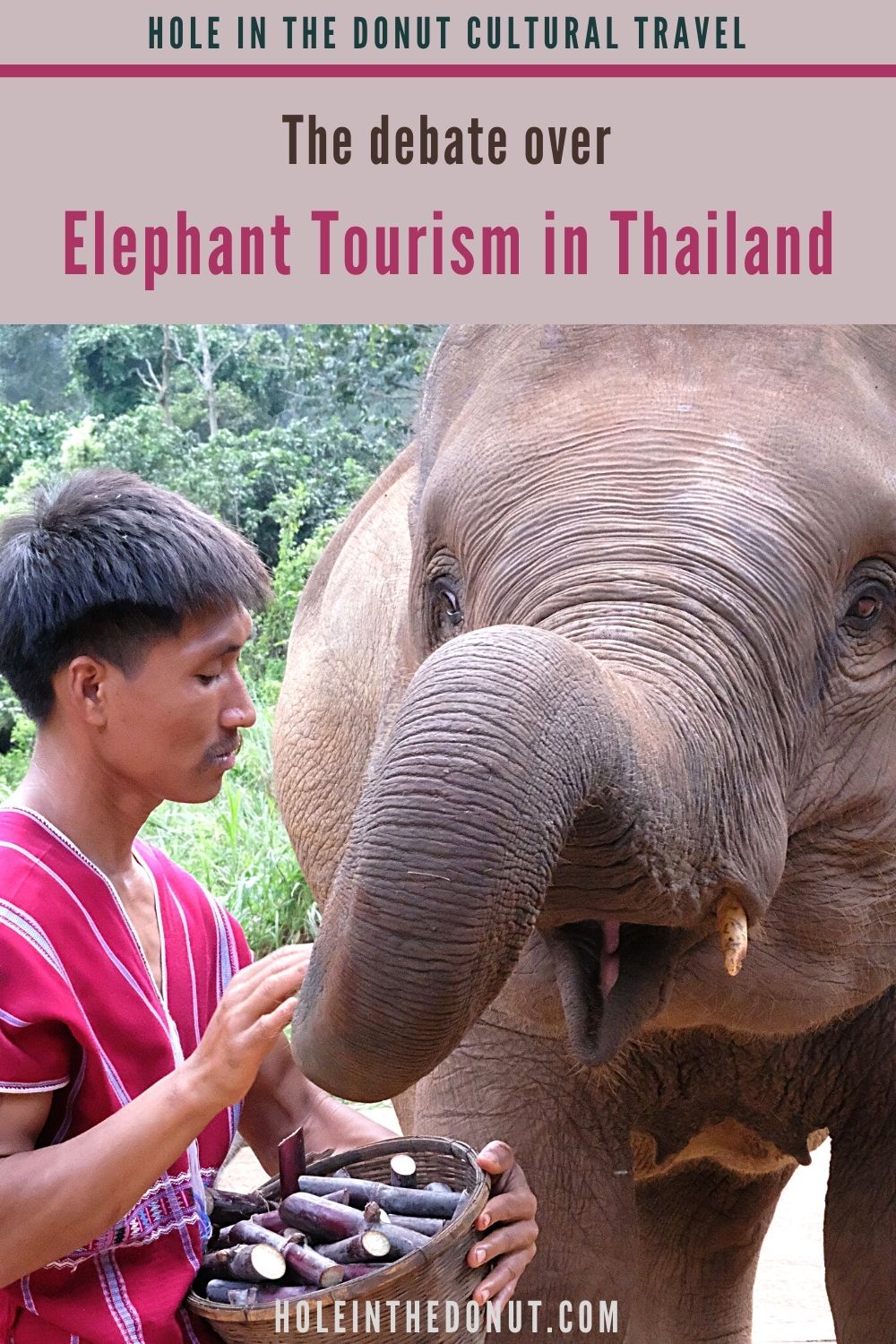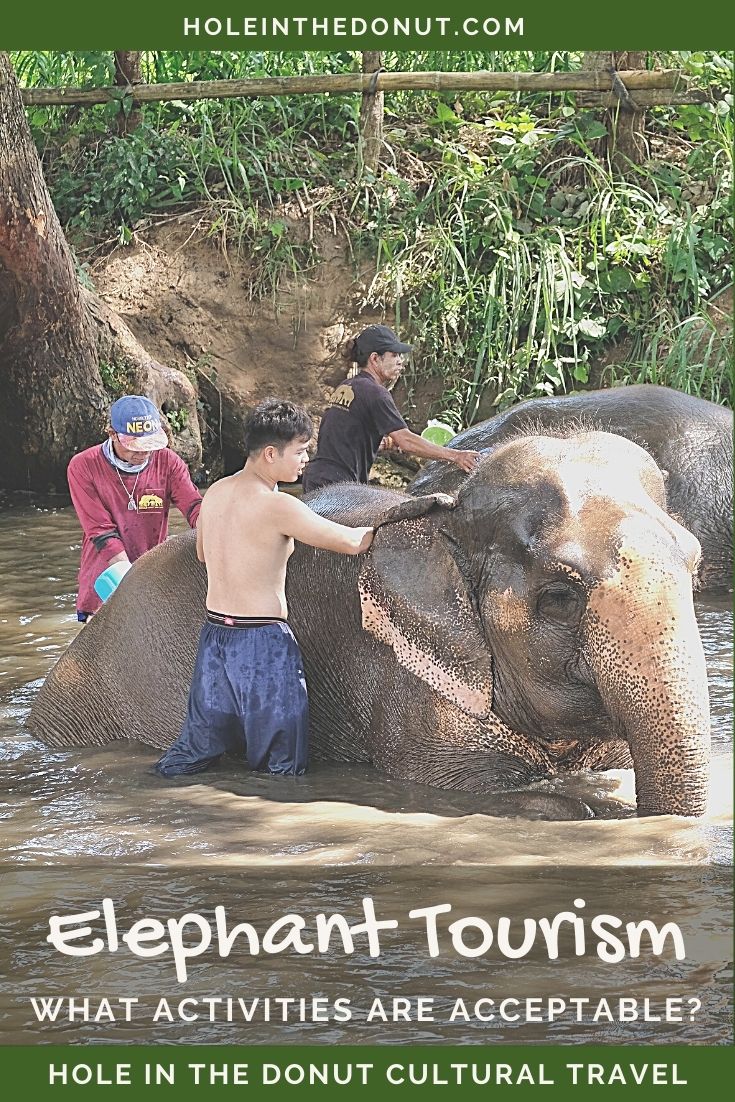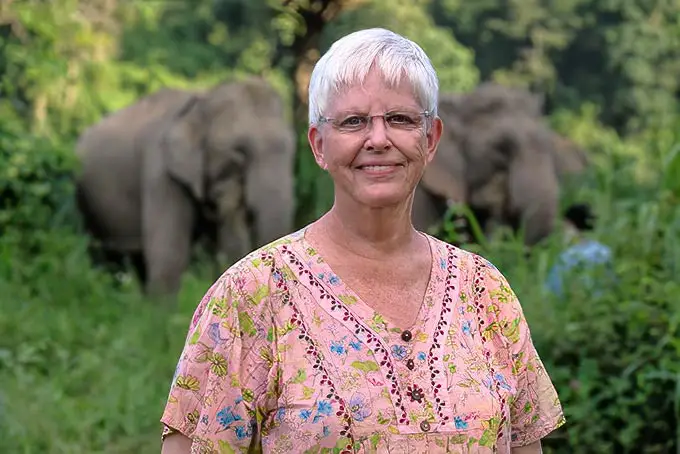Not long ago, if anyone had asked me if I believe it is acceptable to ride elephants, my answer would have been a resounding “NO!” My point of view was challenged this past November, when the Tourist Authority of Thailand (TAT) invited me on a press trip to learn more about the care of elephants in the Kingdom.
Elephants have been an integral part of Thai culture for centuries. Kings rode them into battle. Members of the Royal family and wealthy businessmen used them as a mode of transportation well into the 20th century. Elephant riding diminished once cars and motorcycles entered the picture, but by then elephants had become essential to the teak industry. With no roads carved into the dense jungles, they were the only animal strong enough to drag the immense logs to the river, where they were floated down to Bangkok. For decades, logging companies rented elephants and their “mahout” owners to do this back-breaking work.
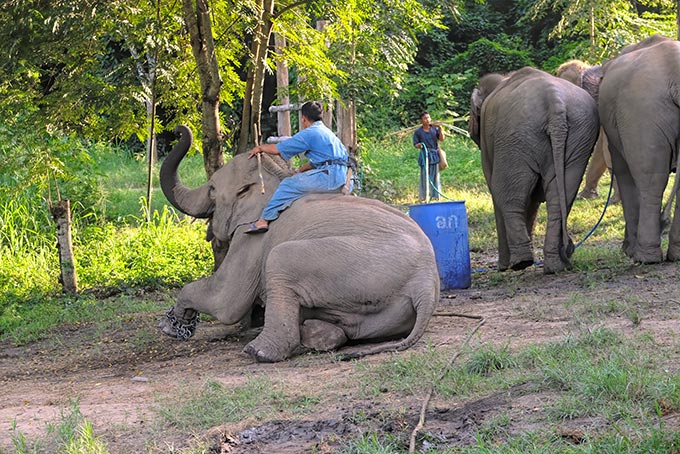
By 1932 the teak industry was in decline in Thailand and in 1989 all logging was banned. Gradually, mahouts and their families lost their means of earning a living, and thus the means to feed their elephants. Some turned to illegal logging, where it was not uncommon for the animals to suffer broken backs or fall off cliffs. A few were rented out to entertainment venues such as circuses and cinemas. Many mahouts roamed the streets of Bangkok with their elephants, begging for donations. It was a horrible existence for animals unaccustomed to traffic, noise, and asphalt and concrete surfaces.
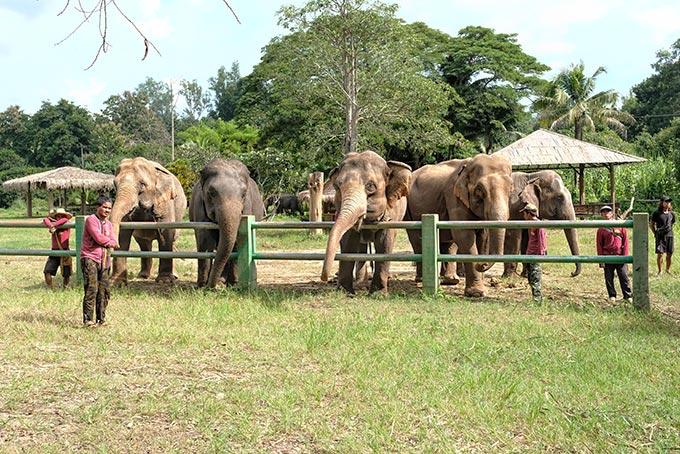
Today the majority of domesticated Thai elephants are engaged in the tourism industry. According to TAT, more than 80% of all tourists who visit northern Thailand will visit an elephant camp or sanctuary. Until recently, the opportunity to ride elephants has been on most everyone’s bucket list, while feeding, bathing, and accompanying elephants on a trek through the jungle have also been popular activities. Elephants have been trained to stand on their hind legs, to reach out with their trunks and kiss people on their cheek, and to paint pictures on canvases, and even to play musical instruments…all for the benefit of tourists. There was little discussion about the ethical treatment of elephants until a few years ago, when Lek Chailert, owner of Elephant Nature Park, began campaigning to end riding elephants and using ear hooks to control them.
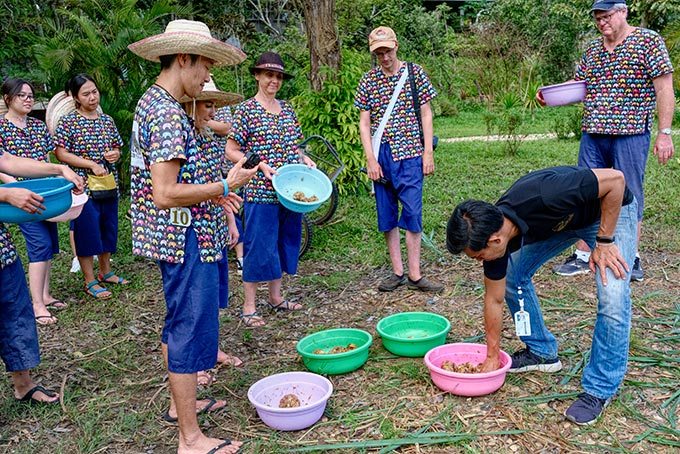
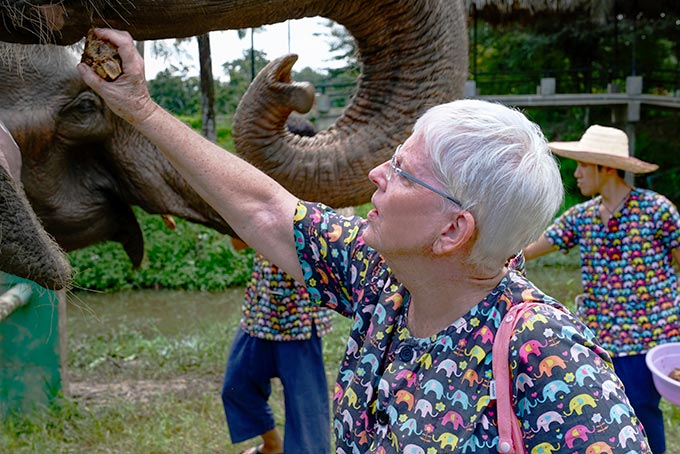
But I’m getting ahead of myself. Let me go back to 2007, when I rode an elephant up a hill at Angkor Wat, Cambodia, to see the sunset. I turned around to snap a photo of the elephant behind me and was horrified to see a mahout pressing a pointed, metal-tipped stick into the forehead of his pachyderm. The poor beast obviously did not want to climb that hill. I turned back to the elephant I was riding, leaned down and whispered, “I’m so sorry. I promise I will never ride elephants again.” And I didn’t. My conviction that elephants are wild animals that should not be forced to carry passengers was only strengthened some years later when I visited Elephant Nature Park in northern Thailand.
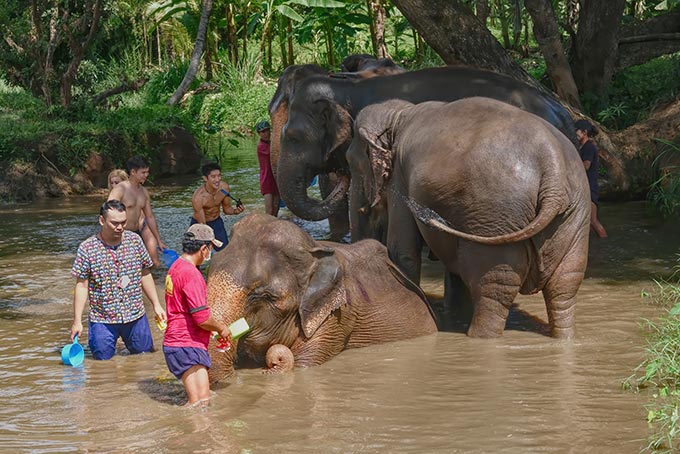
When I was invited on this “Elephant Care Experiential Learning Trip,” I expected the focus to be on humane treatment of the domesticated herds in Thailand. The itinerary stated, “In this trip, we want to show the current situation and how we can, collectively, move forward towards more sustainable solutions for elephant-based tourism in Thailand.” Over three days we visited an elephant hospital and two elephant sanctuaries. On the third morning it became clear to me that Thailand supports elephant riding and even training elephants to paint or play musical instruments. I was surprised, but willing to hear and consider their point of view. We met with a group of veterinarians and handlers who had been researching stress levels and the physiology of elephants for more than a year.
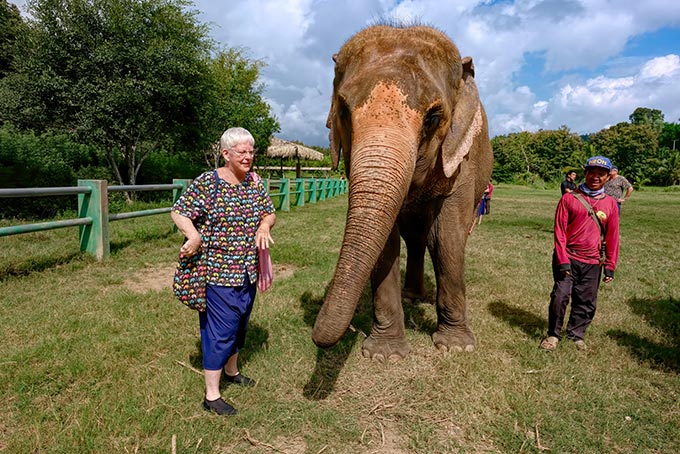
The researchers made some good points. Domesticated elephants can never be released. Not only do they not know how to survive in the wild, they would most likely be rejected or even killed by wild bull elephants, who are already suffering from shrinking habitat due to deforestation. Females who have lived their entire lives in captivity are incapable of teaching their babies how to survive in the jungle, thus the domesticated herd continues to increase in number. It costs between 1,000 and 1,500 baht ($30-45) per day to feed an elephant. Multiply that by 3,500 domesticated elephants in the Kingdom and it becomes obvious that tourism is crucial if the elephants are to be properly cared for.
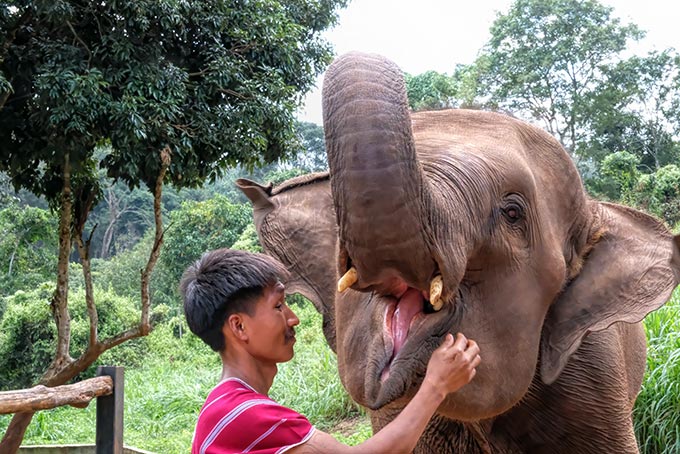
But the question remains, what is considered proper care? According to the researchers, an elephant can safely carry up to 20% of its own body weight. Their bones have no marrow. They are solid rather than hollow like human bones. Additionally, for more than a year the vets have been drawing blood samples to monitor the stress levels in elephants. As might be expected, elephants feel more stress during the tourist high season than low season. But counterintuitively, elephants that are allowed to roam freely in the jungle at night were found to have higher stress levels than those are kept in pens, chained by their feet, and provided with sufficient food. Frankly, I was unconvinced. I questioned how they had established a baseline for stress levels but didn’t receive an answer and the data for their studies were not made available.
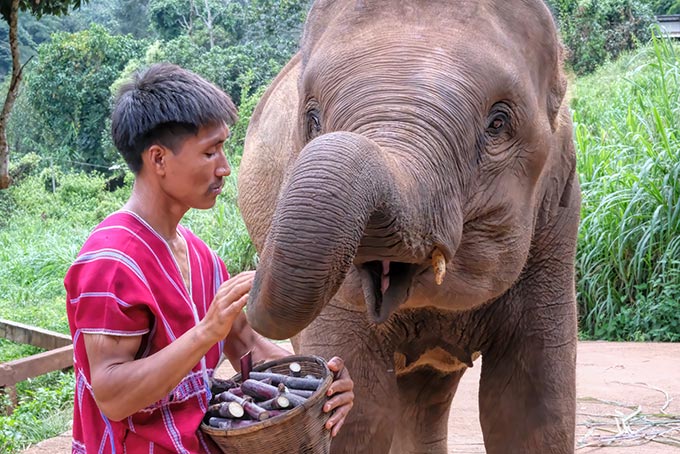
I admit to being conflicted by the issue of what constitutes proper interaction with animals. Where do we draw the line? Should we be riding horses? Or camels? Should buffalo and oxen be used to plow fields in developing countries? Though the terms wild, domesticated, and tame are often used interchangeably, they have very specific definitions. Domestic animals are those that have been selectively bred over many generations to make them better-suited to living alongside humans. Dogs, cats, sheep, pigs, turkeys, donkeys, camels, cattle, and horses fall into this category. Wild animals live and breed in their natural environment without human interference. In-between these two categories are animals that have been tamed. Over time, their behavior changes due to the close proximity with humans, though they can still exhibit wild behavior. Thailand’s “domesticated” elephants would more correctly be described as tamed animals.
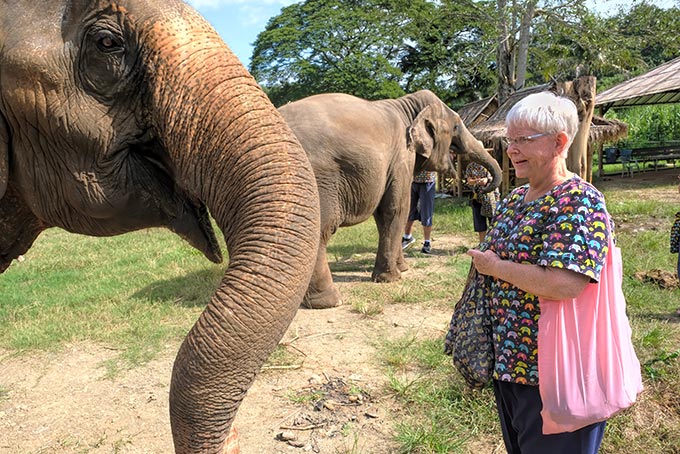
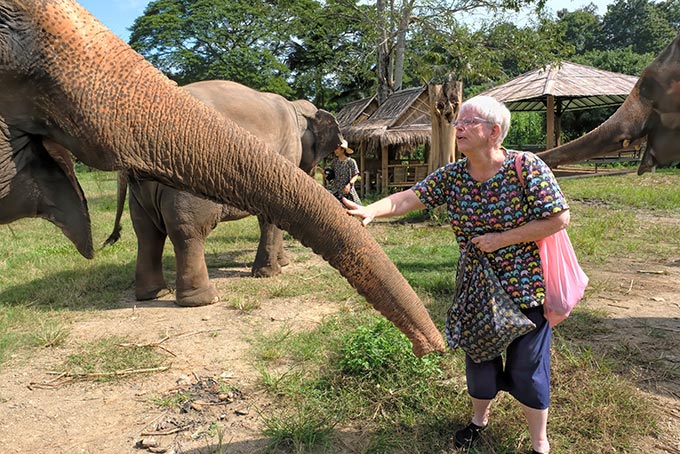
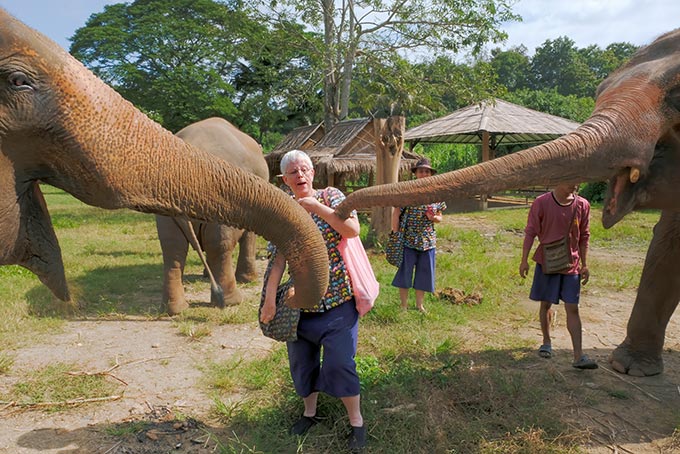
Any conversation about what constitutes appropriate interaction between humans and domesticated or tamed animals must take into account the methods used to train the animals. In the case of elephants, the internet is full of horrific videos of baby elephants being torn from their mothers at a tender age and subject to a ritual known as Phajan, which translates to “crush cage.” The baby is stuffed into a small bamboo enclosure and all four legs are tied to the corners of the cage. It is beaten with sharp tools and screamed at constantly. Bullhooks are often used to stab the elephant’s head, slash the skin and tug the ears, to the point that portions of the ears may be ripped away. The young elephant may be stabbed, burned, and deprived of food and water. This goes on for days, sometimes for weeks, until the elephant’s spirit is broken and they are under the complete control of their handlers.
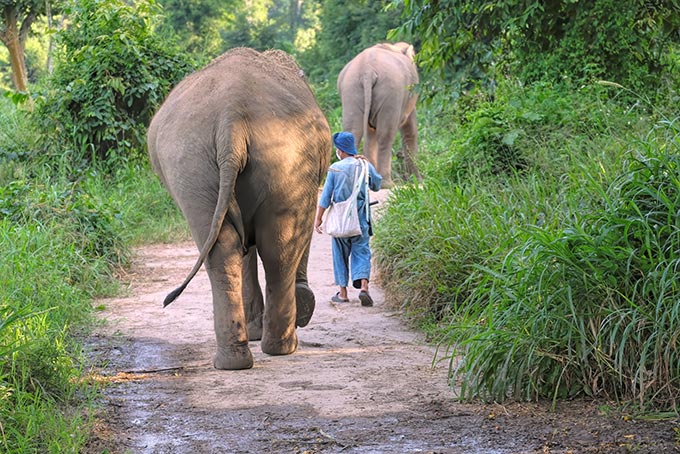
Representatives of the camps we visited told us they never conduct Phajan ceremonies. Young elephants are never separated from their mothers, and only positive reinforcement training techniques are used, though bullhooks pushed through holes in the elephant’s ears are still used as a means of control. I also saw several that were chained, including one big female at the hospital that was hobbled, with both front feet chained together. The vets insisted it was necessary, as she was extremely aggressive, but it still broke my heart. However, the training of “domesticated” elephants in Thailand is much more humane than in most other areas of the world.
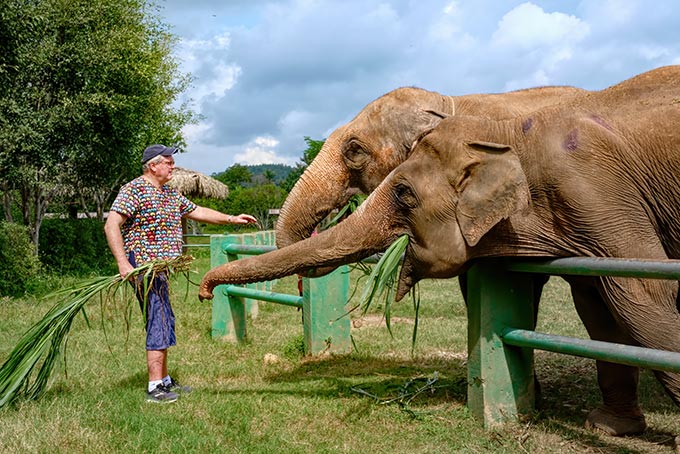
I can’t offer an opinion regarding whether it is ethical to ride elephants. In the end, every person must decide for themselves. For me, the answer is still no. I will never ride one again, nor would I choose to visit any camp that trains elephants to do circus tricks or paint canvases. On the other hand, I see no harm in feeding elephants, walking with elephants, or even bathing them in a river or pond. At Kanta Elephant Sanctuary I was told that the elephants would interact with us as long as we had food for them. Once the food was gone, they would turn their backs and walk away. Indeed, that is exactly what happened. Later that morning, scrub brushes in hand, we waded into a muddy pond with the herd and helped bathe them. There was no doubt in my mind that the elephants not only enjoyed this interaction, they luxuriated in it.
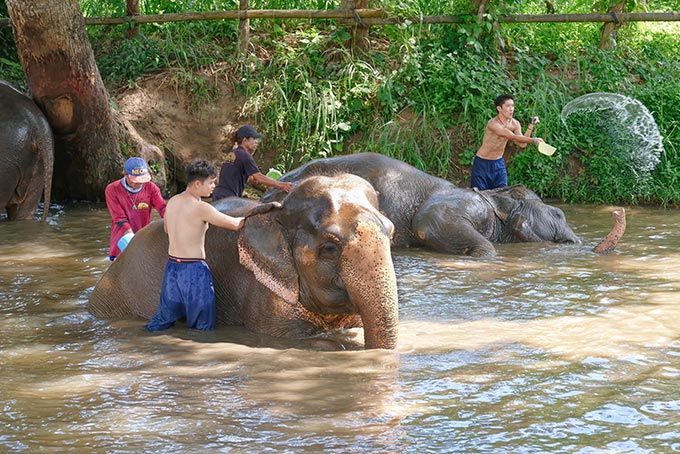
All three of the camps we visited had excellent facilities, but Kanta Elephant Sanctuary in Chiang Mai was my personal favorite. Their website states, “Our hope is to lead by example, and contribute to a positive change in the perception of elephants; to witness a future where elephants are not ridden, poached, overworked, or abused, and are instead treated with care, love, and respect.”
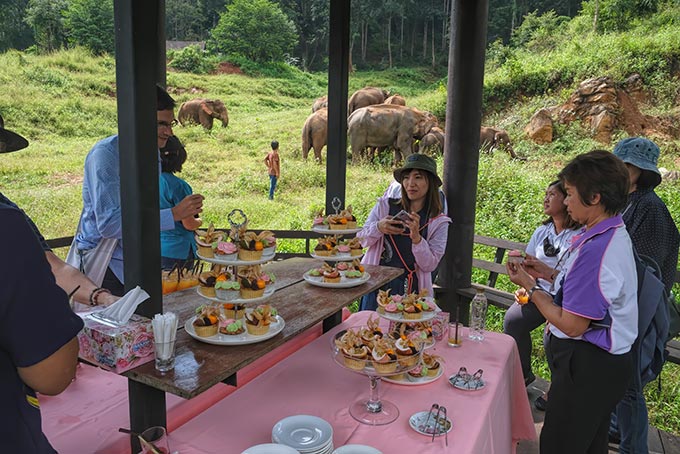
The Thai Elephant Conservation Center in Lampang Province offers elephant rides and also puts on a 40-minute show three times a day, which “highlights the agility and intelligence of these graceful creatures.” TECC is the first place in Thailand where elephants were taught how to paint and it’s also home of the Thai Elephant Orchestra. As well as producing paintings and music, the elephants demonstrate techniques formerly used in the logging industry.
While Patara Elephant Farm in Chiang Mai does offer guests the opportunity to ride elephants, they also offer an intriguing “Elephant Owner for a Day” program that trains participants how to approach an elephant correctly, recognize its temperament, feed and check its health, bathe and brush it in the river, how to ride on its neck, and how to communicate through different spoken commands.
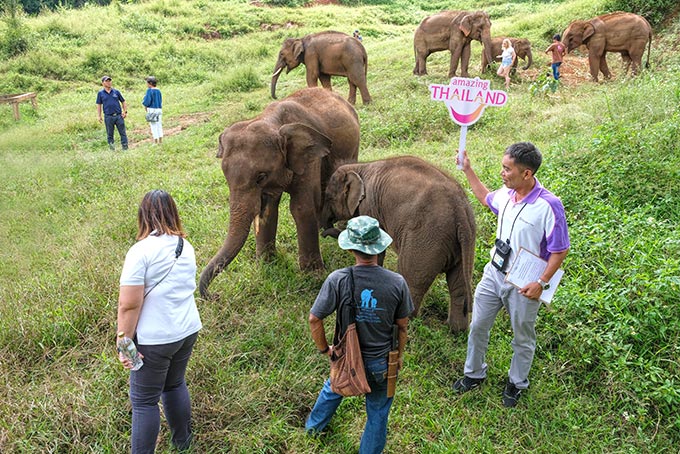
Elephants will always be important in Thai culture. Not only is it the national animal of Thailand, elephants are a sacred animal in Buddhism. They are widely depicted in artwork, written about in literature, and included on national emblems. The provincial seal of Chiang Mai features an elephant in a glass palace. There is Chang (Elephant) Beer and Elephant Brand Thai Jasmine Rice. There is even an Elephant Brand Cement. With more than 3,500 domesticated elephants in the Kingdom, more babies being born every year, and an average lifespan of 50 years, Thailand will be struggling over how to manage the herd for many decades to come.
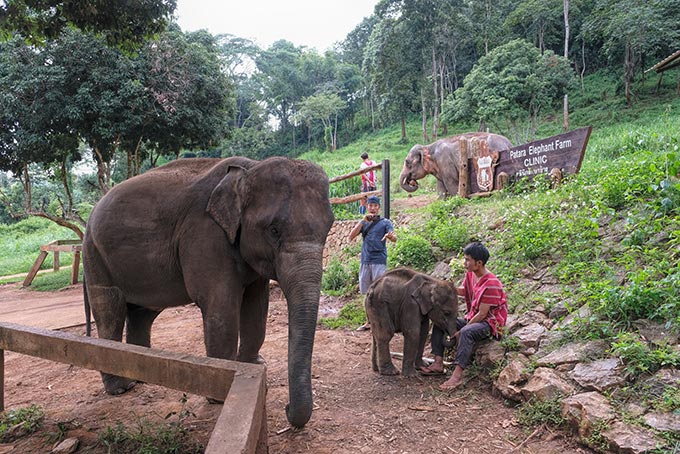
Perhaps the most intriguing idea I heard during the press trip came from fellow travel writer Jenny Littlewood, who asked whether sterilization of domesticated elephants had ever been considered. Though a long-term solution, it would gradually reduce the herd as older elephants died. The room fell quite silent for a moment and no answer was forthcoming. Later that day, the answer became obvious to all of us when a mother elephant and her two babies wandered into our circle. We all oohed and aahed and posed for photos with the adorable youngsters. Let’s face it, adult elephants are impressive, but baby elephants are terminally cute. It’s the babies who draw the tourists. And that means the Kingdom of Thailand will continue to breed the domestic herd and pursue elephant tourism, riding and all, for the foreseeable future.
You may also enjoy:
My visit to Elephant Nature Park in Mae Taeng, Thailand
Visiting Siem Reap, Cambodia, including my first and only elephant ride at Angkor Wat
From Digital Nomad to Expat – Putting down roots in Chiang Mai, Thailand
I was a guest of the Tourist Authority of Thailand during this three-day trip to learn about Elephant Care in the Kingdom of Thailand. However, the receipt and acceptance of complimentary items or services will never influence the content, topics, or posts in this blog. I write the truth, the whole truth, and nothing but the truth.
